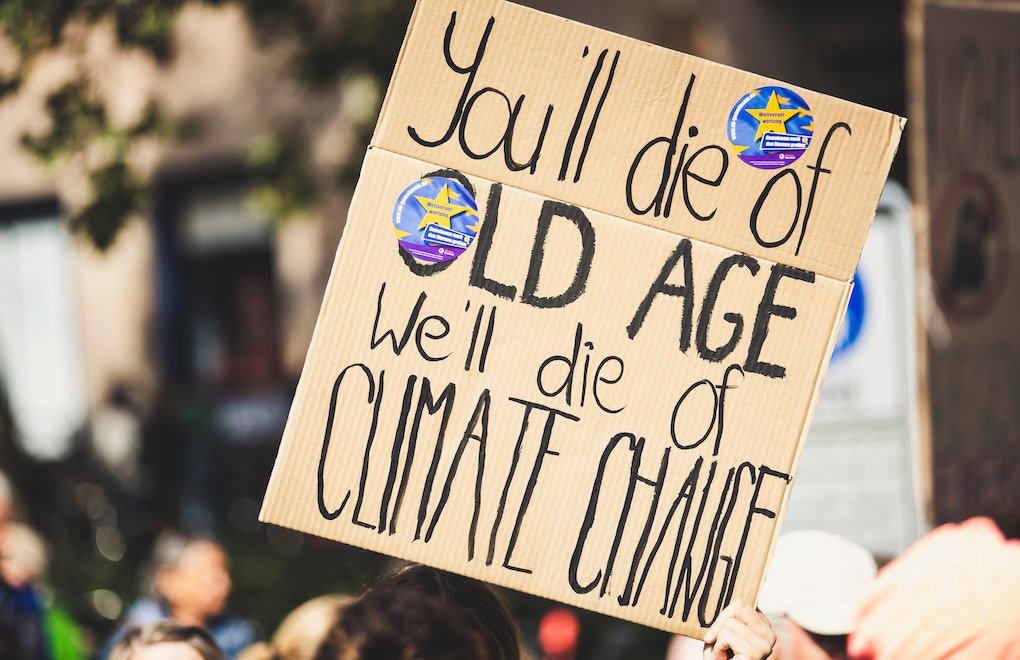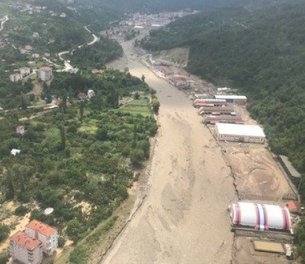REPORT
Climate crisis in Turkey's news media: Censorship, interest networks, budget…

* Photo: Pexels
Click to read the article in Turkish
Under which circumstances is the climate crisis included in the agenda of the media? Which perspectives are represented? What are the frames that create the news patterns? How do these patterns differ according to the editorial stances of newspapers?
Prepared by Dr. Sarphan Uzunoğlu and Hazal Sena Karaca from NewsLabTurkey, a recent study looks for answers to these questions, aiming to suggest solutions to problematic journalism practices affecting news coverage by exploring the political, economic and structural dynamics shaping the current situation of climate journalism in Turkey.
The findings of this research were obtained by conducting content analysis on 1,021 climate crisis news items from 10 newspapers of different editorial stances between July 1, 2021 and November 5, 2021 and semi-structured interviews with climate journalists.
Accordingly, the views of Elif Ünal (Yeşil Gazete), Özgün Özçer (Gezegen24), Pınar Tarcan (bianet), Tansu Pişkin (bianet), Zeynep Yüncüler (Gezegen24) were cited in the final part of the study, thereby offering an insight into the current situation of climate journalism in Turkey.
Highlights from the report
Some of the main findings of the study titled "News Media and Climate Crisis" can be listed as follows:
- The main problems affecting the quantity and quality of news regarding the climate crisis include the lack of expert journalists in this area, resource and budget problems, difficulty reaching related institutions, people, and data. Mainstream media has censorship and auto-censorship problems in addition to these. Media-power relations, with some media corporations having investment in energy or natural gas are among the dynamics triggering auto-censorship mechanisms in climate crisis news.
- The number and use of visual-audio content such as video news, podcasts, or infographics that have the potential to interact with the audience is very limited. The complexity of scientific knowledge, concepts and data and lack of storytelling are also among the reasons limiting interaction between the audience.
- Presenting the climate crisis news as a disaster and exaggerating the issue is another problem in mainstream media. Including iconographies such as polar bears and melting glaciers is also hindering the internalization of the climate crisis by the audience. 52 percent of the examined news does not include a solution proposal to the climate crisis.
- It can be seen that the media coverage of the climate crisis increased after forest fires and the West Black Sea floods in 2021. After losing popularity after these natural disasters, the climate crisis was heavily included in the news between 1-5 November 2021 during COP26 summit.
- Economic and political interest networks and ideological stances of newspapers determine the importance given to the climate crisis. The climate crisis, which is not a standalone concern and focuses on the mainstream media, gains visibility in parallel to politicians' agenda.
- The most represented are scientists /experts (33 percent), politicians (27 percent), and international organisation representatives (16 percent). The platforms other than Evrensel and Bianet do not give enough visibility to activists and NGOs.
- While the attribution of responsibility frame was the most predominantly used in the climate news coverage, the use of the frames depended on ideological and editorial stances of the newspapers/platforms. The attribution of the responsibility frame is followed by the economic consequences frame, while human interest and morality frames are scarcely observed in the news.
- Media that are close to the government usually include the climate crisis as a means of financial gain because of the Paris Agreement and Green Deal in their news.
- The responsibility of the corporations regarding the climate crisis is often ignored by the mainstream media.
- Most of the news consists of short, informative, and directly quoted contents taken from agencies or foreign press. It is seen that bianet, Evrensel, T24 and Medyascope cover the climate crisis in a wider perspective and creative original content, so perform much better than other media institutions in including the climate crisis to their agenda.
'Situation in Turkey not so different'
In their executive summary of the report, Dr. Uzunoğlu and Karaca have shared the following commentary about the issue:
"Today, the climate crisis has gone beyond being a measurable and observable concept rooted in natural sciences only.
"Alongside the emergency it created because of its destructive effects on the ecosystem and human lives, we also witness an expansion of meaning as the climate crisis is being discussed within the context of popular culture, politics, economics, and ethics.
"Media, creating these meanings and being the main source of our knowledge on the climate crisis, has an important role in shaping our attitudes and perceptions, and awareness.
"On the other hand, there are also numerous discussions claiming that the media do not cover the climate crisis sufficiently and correctly, and commentary and framing of the news thus block social awareness.
"The situation in Turkey, which is in a very fragile position because of its geographical location, is not so different. It is difficult to say that the climate crisis finds enough media coverage in Turkey. Even if it finds media coverage, it is still far from creating social awareness and staying on the agenda to increase pressure on policymakers.
"This issue with coverage is also the focus of popular discussions and research, which are quite limited. Growing interdependence between the media, power and capital and systemic problems affecting journalism practices are often ignored in these ongoing discussions."
(TP/SD)





as.jpg)

